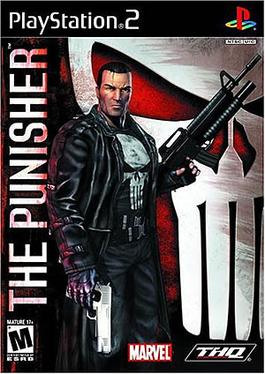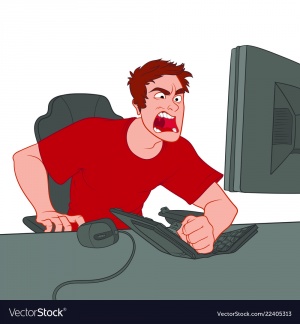Difference between revisions of "The Punisher"
| Line 13: | Line 13: | ||
</ref>. They also found that the smaller the brainwave reaction to violent images, the more likely participants were to behave aggressively in the reaction time test. | </ref>. They also found that the smaller the brainwave reaction to violent images, the more likely participants were to behave aggressively in the reaction time test. | ||
== References == | == References == | ||
| + | |||
| + | [[Category:2020New]] | ||
| + | [[Category:2020Object]] | ||
Revision as of 13:54, 17 March 2020
The Punisher character is a Marvel Comics character who was created by writer Gerry Conway and artists John Romita Sr and Ross Andru, and made his first ever appearance in The Amazing Spider-Man #129, which came out in February of 1974! The Punisher, is a third person shooter video game where you play as the character Frank Castle, also known as The Punisher, whose family was murdered by the mafia for witnessing a murder in Central Park, New York. Frank seeks his revenge by engaging in a one man war with any and all criminals. Although the game is called “The Punisher”, it wouldn’t truly be a Marvel game without cameos from other Marvel characters, and the game is riddled with them. Characters such as Ironman, Black Widow, and Nick Fury can be found throughout the playthrough of the game. The Punisher was developed by Volition and published by THQ, it was released for the original Xbox, Playstation 2, and Microsoft Windows and it uses a 3D graphics engine called Havok, to create the world and characters in it. The Punisher video game is just one piece of the huge Marvel Comics franchise, however it is one of very few Marvel games that allows for you to do some incredibly gruesome acts of violence to criminals.
Contents
Controversy
The game was originally given an “Adults Only” rating from the ESRB, an American self-regulatory organization that assigns age and content ratings to consumer video games, which would have severely hampered its ability to advertise and market itself. However, the game was eventually edited down to a “Mature” rating after the developers made some tweaks to the torture scenes and death scenes, allowing for the game’s release to take place in 2005. This particular Punisher game created a buzz of controversy due to the games ability to commit very graphic and horrendous murders, as well as some really horrid torture and dismemberment mechanics. Due to these mechanics the ACB, which is Australia’s version of the ESRB, required that the developers remove two whole scenes from the game before it could be released in Australia. In Germany, the game was thought to be so violent, that it was put on the infamous Federal Department for Media Harmful to Young Persons list, which puts large restrictions on the game’s ability to sell copies and put out advertisements. Despite the game’s unusually violent nature it managed to rack in some pretty good reviews, receiving an 8/10 from IGN, and 8.5/10 from GameZone(PS2), and a 10/10 from Maxim.
Ethical Issues
Cheat Codes
The Punisher video game is filled with cheat codes that the player can enter to change their gaming experience. When entered these cheats have the ability to give the player all the missions, challenge modes, punishment modes, armory, war journal stuff, comic covers, concept art, flashbacks, movies, and skins. The only consequence of using cheat codes in The Punisher is that the player cannot progress through the game and the player will not earn style points.
Violent and Graphic Content
As previously stated The Punisher video game is incredibly violent, ranging from drilling a drill into a NPCs eye and out the back of his head, throwing a NPC into a trash compactor and having him crushed, and even having the ability to throw a NPC into a furnace and watching him burn alive. Having players exposed to that sort of violence raises a lot of ethical questions, the most common question being; does violence in video games encourage violence in real life? According to the American Psychological Association, or the APA, after having finished multiple meta-analyses of the research, it was found that there is a direct association between violent game use and aggressive outcomes[1]. These findings have also been seen over a range of different samples, including those with older children, adolescents, and young adult participants.
Desensitization
Another ethical concern that arises from consistent exposure to violence in video games is whether or not it desensitizes players to real world violence. A study done by several professors, one of which is from the University of Michigan, found that participants who routinely played violent video games responded less to violent images. This was found by measuring their brain waves with an electrode cap, the participants that played violent video games had less brainwave activity when viewing a violent image[2]. They also found that the smaller the brainwave reaction to violent images, the more likely participants were to behave aggressively in the reaction time test.

